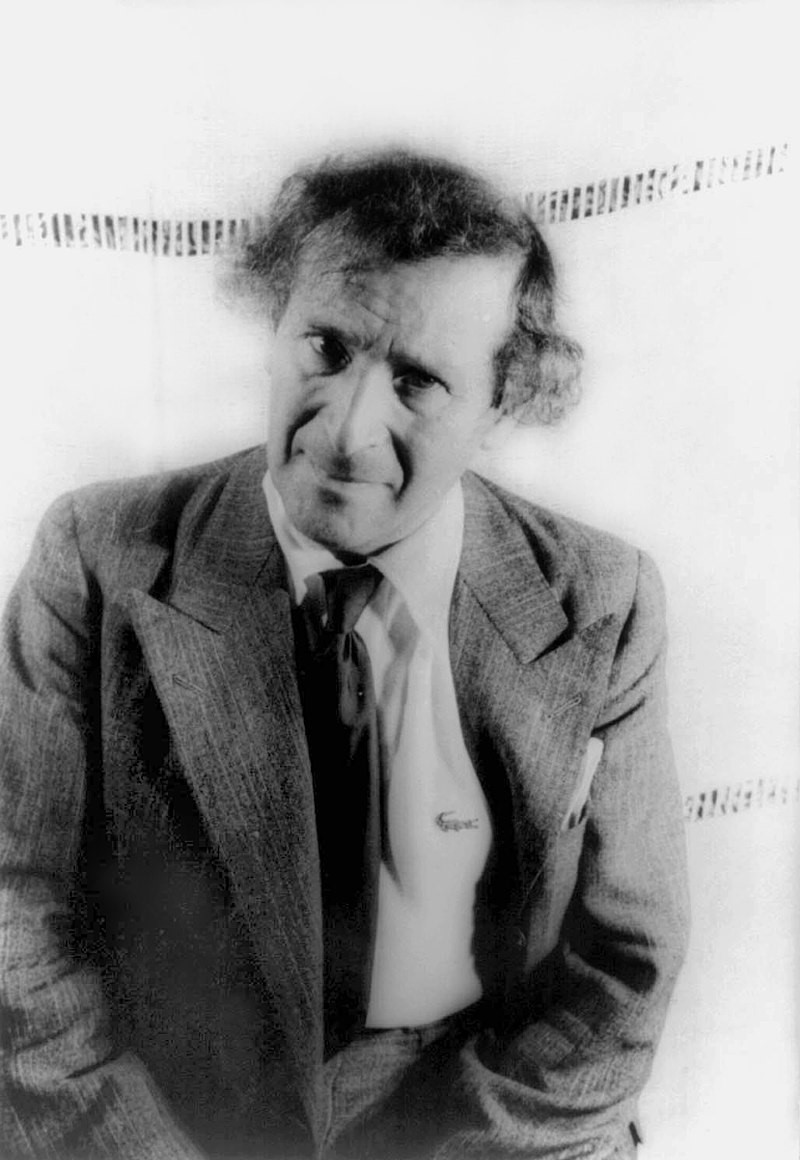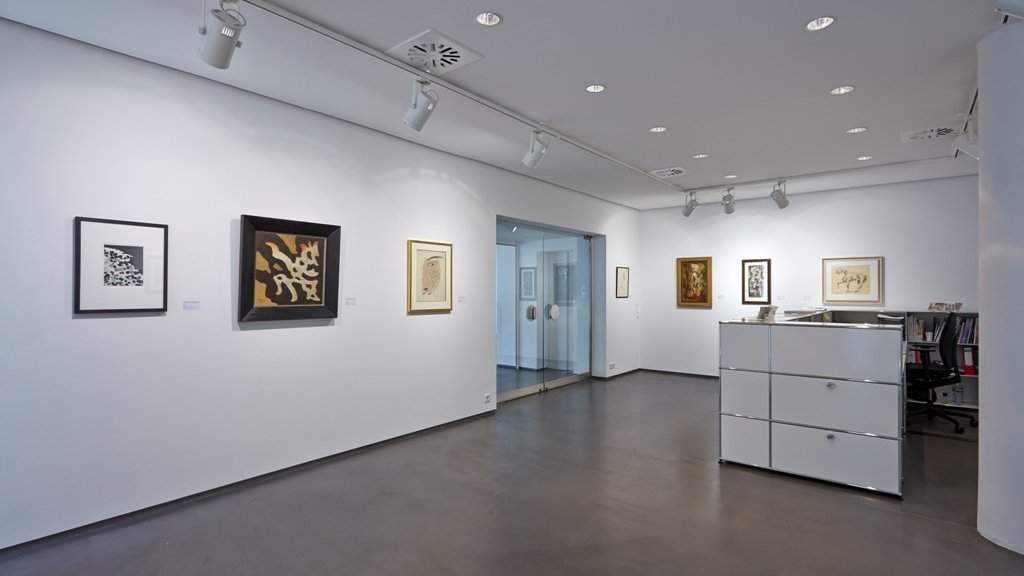Marc Chagall
Biography
The work of the Russian-French painter Marc Chagall is influenced by elements of Russian folk art, Jewish mysticism and legends. Again and again dream images are staged and through mostly simple forms an expressive composition with bright intense colors unfolds to the viewer. Picture compositions and line management form themselves expressively and show animals, angels, representation figures of the Jewish religion, in addition, surreal elements such as flying humans and motives of the color-intensive-wild circus world. For this purpose, the artist uses primary and complementary colors, which are applied to the canvas completely unprocessed, thus the saturation of the colors in the overall work varies greatly. This technique of applying colors and the variation of the effect aesthetics of the paintings represents the color vividness of nature. The painting "The Bride" combines these elements in bright intense colors. In the foreground of the painting is a young woman in a red wedding dress with a long white veil. Animals play a melody on instruments and her husband floats, lovingly embracing her, in the background of the painting. The oeuvre is difficult to assign to a particular style, often he is considered a forerunner of Surrealism. Moreover, a synthesis of Fauvism, Cubism with his own style interpretation and the folk mythological elements in his work can be called outstanding. He is considered one of the most important painters of the 20th century and still influences the art world today with his creative power and ability to tell myths artistically.
Marc Chagall was born on July 6, 1887 under the name Moische Chazklelewitsch Schagalow in the Jewish ghetto in Peskowatik near Witebsk. Growing up in the circle of a working-class family, Chagall searched for the meaning of his life from an early age and longed for a meaningful task, which he finally found in art. His childhood and youth were marked by the poverty and deprivation of the simple circumstances in which his family grew up. After graduating from school in 1906, Chagall attended the painting class of genre and portrait painter Jehuda Pen, from where he moved to St. Petersburg in the winter of that year and was accepted into the school of the Imperial Society for the Promotion of the Arts. In 1910, the artist made the decision to continue his career in Paris and moved into a small studio in the Impasse du Maine, from where he moved on to the artists' house La Ruche in 1912, where he worked with Robert Delauney, among others. His famous painting "I and the Village" was created in 1911 and represents a virtuoso synthesis of the two worlds to which Chagall felt he belonged: Paris and Vitebsk. The painting is stylistically based on the artists of the avant-garde, is modern, almost surrealistic, thematically it remains close to his homeland and reveals folkloric elements. The mood of the painting conveys freedom, but also the restlessness of the artist, determined by vast amounts of new impressions of the city of millions. Since 1912, Chagall, called "Le poète", the poet, by his fellow artists, has exhibited at the Salon des Indépendants. From now on, Chagall's career was set in motion: in 1914, he opened his first solo exhibition with 40 paintings and 160 drawings at the Berlin gallery of the German art dealer Herwarth Walden. He remained in the USSR until 1922, opened an exhibition in Moscow, became involved in the February and October Revolutions, became an art commissioner in the Vitebsk region, and finally opened the Folk Art School and Museum. It was not until 1922 that Chagall moved back to Paris via Berlin, from where a large number of exhibitions took place over the next few years. Again and again he took on commissions and visibly established a broadly diversified œuvre, ranging from illustrations, etchings, oil paintings, murals, sculptures, costumes and stage sets to stained glass and ceiling paintings. His extensive oeuvre is completed by, among others, the illustration of the Old Testament, the ceiling painting in the Paris Opera, the murals for the Metropolitan Opera and Lincoln Center in New York, and the stained glass windows for the cathedral in Metz. In the following years, the artist's life is marked by long travels and guest stays in different countries. He died on March 28, 1985, leaving to posterity an extensive body of work that is still appreciated and admired in numerous exhibitions.
In art, as in life, everything is possible if it is based on love.

Ausstellungen
Messen
Museumsausstellungen (Auswahl)
2020: Picasso, Chagall, Jawlensky Ausstellung im Kunstmuseum Basel
2018: Chagall. Los años decisivos, 1911–1919 im Guggenheim Museum Bilbao
2017-2018: Marc Chagall Ausstellung im Museum MUDEC, Museum der Kultur in Mailand
2017: Chagall - The Breakthrough Years, 1911–1919. Kunstmuseum Basel / Neubau, Basel, Switzerland
2016: Chagall - Divine and human. Fundacion Canal, Madrid, Spain
2015: Marc Chagall - Enchanted Dreams. Opera Gallery – Singapore
2015: Chagall. Royal Museums of Fine Arts of Belgium, Brussels, Belgium
2014: Chagall. Opera Gallery – London, United Kingdom
2014: Marc Chagall - The Infinite Color and Wonder of Prints. Meguro Museum of Art, Tokyo, Japan
2013: Chagall: Modern Master. Tate Liverpool, United Kingdom
2012: Marc Chagall im Museo Nacional Thyssen-Bornemisza in Madrid
2010: Marc Chagall im Bucerius-Kunstforum in Hamburg
2005: Sprengels Chagall. Sprengel Museum Hannover, Germany
2004: Chagall - Die Mythen der Bibel, Albertina, Vienna, Austria
1998: Marc Chagall, Die Lithographien - La Collection Sorlier, Staatsgalerie Stuttgart, Germany

